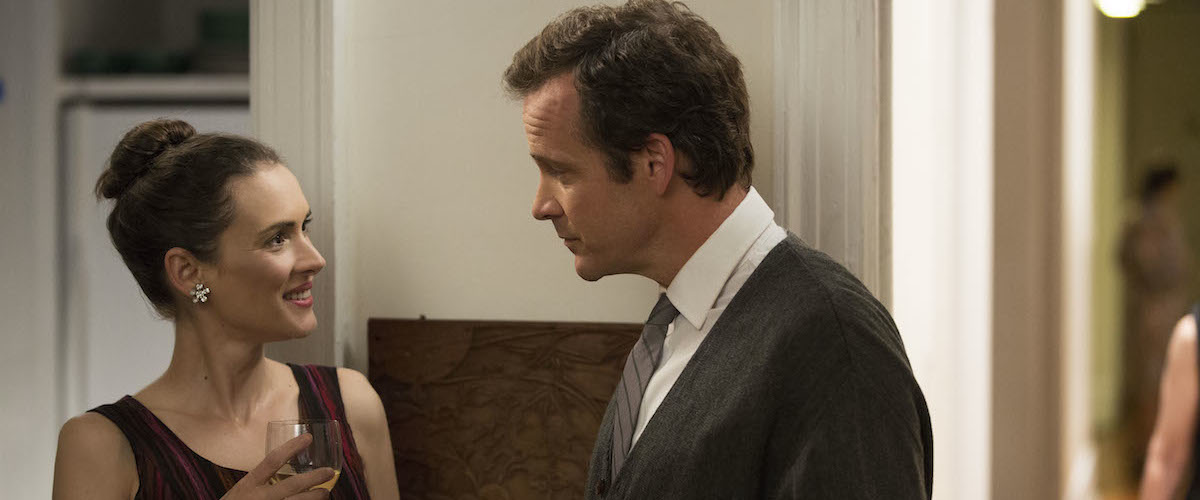By Chlotrudis Independent Film Society
Rating: 4.25 cats
Director: Michael Almereyda

Country: united_states
Year: 2015
Running time: 98
IMDB: http://www.imdb.com/title/tt3726704
Jason says: “I really hope that this one opens fairly wide, because I’d like to give it a second look. I came out of it with an odd sort of ambivalence, liking almost all of what it did but feeling like there should have been more heft, especially with all the unusual techniques writer/director Michael Almereyda was using to make sure the audience was paying a little more attention. That’s kind of unfair, though – isn’t one of the things that usually makes biopics kind of eye-rolling the attempt to make a person’s individual life a symbol of something else?
“This one is a biography of Stanley Milgram (Peter Sarsgaard), a scientist studying social relations who is best known for the ‘teacher/learner’ experiment, begun in 1961, where two subjects are placed in separate rooms and one is instructed to give the other a sort of quiz, administering escalating electric shocks for wrong answers – with the twist being that the ‘learner’ (Jim Gaffigan) is a plant who is not actually getting shocked, because the experiment is meant to see how willing people are to hurt another human being simply because someone in authority tells them to. With the atrocities of World War II still fresh in the world’s minds – the end of the experiment coincides with the execution of Adolf Eichmann – the results which show that most people will submit to authority are uncomfortable, but Milgram seems to become more infamous for having lied to his subjects rather than the truths he revealed, despite the interesting other work he does.
“Most screenwriters would try to find some way for this experiment to become a metaphor for Milgram’s life, and in some ways I think that Almereyda is explicitly trying to buck this trend: He spends a lot of time focusing on the Milgram’s work, detailing experiments well beyond his most well-known project and pointedly mentioning that he wished he could be remembered for the quality and results of his work rather than the vaguely uncomfortable feelings it inspired in people who had not actually read it. This lets Almereyda stage intriguing sequences showing some of Milgram’s other work, such as the ‘Lost Letter’ and ‘Small World Problem’ experiments, which are telling in their own way. Still, the approach at times feels paradoxical – by blunting the usual way to assess Milgram’s life, the film sometimes lacks the sharpness to puncture those preconceptions.
“Fortunately, Almereyda has a great many other tools at his disposal, and he’s fairly clever in how he uses them. Sometimes it’s right out there to be noticed, such as the scenes shot with flat, black-and-white backgrounds and others that have a literal elephant in the room. The first time Milgram breaks the fourth wall, on the other hand, it’s a small thing, clarifying a minor point, but the use of the technique grows until Milgram seems not only quite cognizant that he is a character in a movie, but one made after he has died, and it’s like he is still trying to regain control of the narrative from beyond the grave. Not excessively – the movie never becomes about the movie – and the asides are often funny enough in and of themselves to be worth the odd break.
“Peter Sarsgaard sells those in witty fashion, and that dry take on Milgram is the fuel that makes much of the movie work. He leans into how Milgram can seem kind of dry and stuffy, stepping toward an irony that he may have precise understanding of certain aspects of human behavior while being mystified by others, but always finds a way to remind the audience that he is more emotional than he lets on. It’s a nice push-and-pull, getting the viewers to empathize with his wounded pride while gently irritating them by having so much.
“Though the film pointedly belongs to Sarsgaard and Milgram, there’s a fairly entertaining cast by his side throughout. Winona Ryder gets the most time as girlfriend/wife Sasha, tending to capture a level of curiosity, devotion, and/or exasperation that is seldom quite what the audience expects. There are also a ton of familiar faces in smaller parts, from Jim Gaffigan as one of Milgram’s early collaborators to John Leguizamo and Lori Singer as experimental subjects. Dennis Haysbert and Kellan Lutz seem to have fun as the actors starring in a TV-movie ‘inspired by’ Milgram’s work (although some may feel Lutz doesn’t chew quite enough scenery).
“The set for that TV-movie is one of the most obvious examples of Almereyda and his crew having fun with their period, a big wink toward the audience in a movie generally satisfied with smaller ones. The look of the movie does a nifty job keeping a consistent look while going from the stodgy early 1960s to the garishness of the 1970s. Almereyda always seems to have a bit of whimsy at hand, making what’s going on a little more entertaining without quite making anything look silly.
“Rolling it over in my head and recognizing that I’m doing something I don’t really want to do in for this movie in particular by judging it on first impressions, I’m liking it a little more. I’d still like another chance, because it’s a really nifty fourth-wall-breaking, stylish-but-understated movie, and I suspect it may be a bit more than I thought at that. 4.25 cats
“Seen 2 August 2015 in Theatre Hall Concordia (Fantasia International Film Festival, DCP)”
